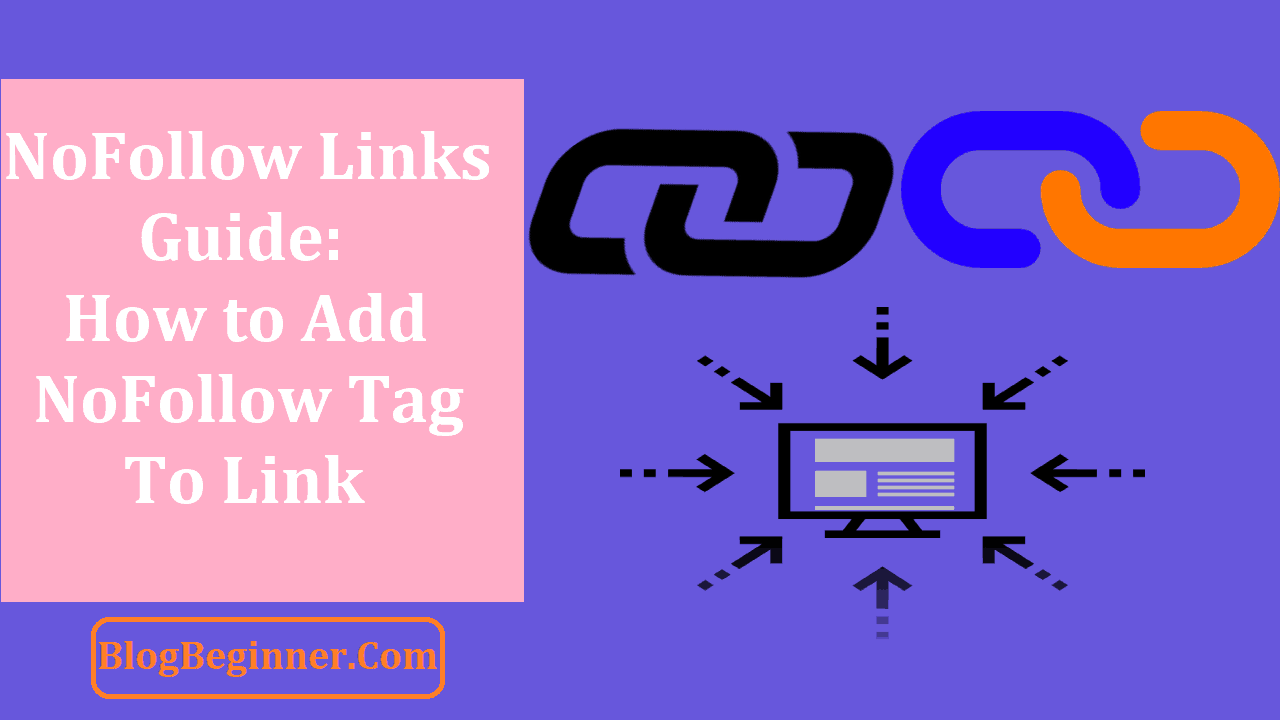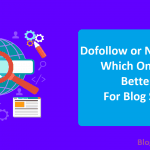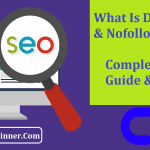In simple terms, Nofollow links are special links with a rel = “nofollow” HTML tag assigned to them.
Links with this unique value in their rel attribute instruct search engines, such as Google, to ignore that link because they do not influence the ranking of the link’s target by passing link equity.
From a user’s perspective, it is impossible to differentiate between an ordinary link or DoFollow and a NoFollow. Yet, when it comes to Search Engine Optimization, the disparity is quite glaring.
Web browsers allow us to identify whether a web page is using NoFollow links or not. By “inspecting” the target link, we can check the rel attribute value and learn the nature of the link.
Contents In Page
How to Create NoFollow Links?
An ordinary link looks like this: <a href=https://www.examplewebsite.com”> Dummy Link</a>
To turn the link above into a NoFollow link, we only need to add a special rel value:
<a href=https://www.examplewebsite.com” rel=”nofollow”> Dummy Link </a>
Where Did the “nofollow” Value Come From?
At first glance, NoFollow links can come off as restricting and disadvantageous. Considering how they work, the assumption is hard to refute. Yet, the fact that these links don’t pass link equity can often turn out to be beneficial.
To get a more in-depth insight, it is helpful to know the reason behind this neat invention.
In the early days of the ‘blog boom,’ spammers were challenging the natural order of the Internet. They used to fill comment sections with ads that, more often than not, linked to poor-quality websites. As a result of this little backdoor trick, unreliable websites started to rank high on Google. That, consequently, pushed trusted, high-quality sites out of the search results.
Soon enough, this clever exploitation caught Google’s attention. In early 2005, Google’s Matt Cutts and Blogger’s Jason Shellen proposed the special rel value to solve the problem. After a few successful trials, they incorporated it into their algorithm.
Types of NoFollow Links
Any link that has “nofollow” in its rel attribute is a NoFollow link. Still, as a general guideline, we can figure out these links to be NoFollow links:
- Social media — sites like Facebook, Twitter, or Instagram
- Blog comments
- Links to user-generated content
- Links in press releases and news websites
Apart from the sources mentioned above, all major websites (like YouTube, Wikipedia, Reddit, or Twitch) use ‘nofollow’ by default in all of their outbound links.
In doing so, they free themselves from the responsibility of backing questionable websites or web pages.
The head of Google’s spam team, Matt Cutts, confirmed that all paid links must have the “nofollow” value assigned to them. This was Google’s way of stopping paid links from passing credit and helping the ranking of the link’s target.
Are NoFollow Links Helpful?
NoFollow links are helpful for many reasons, and the top three are:
-
Organic Traffic
Knowing how NoFollow links work, there should not be much debate over their SEO impact.
Yet, despite not directly helping with SEO, and thus page rankings, NoFollow links are still just links. And like normal links, they also help direct traffic to our websites.
Taking that perspective into account, it is irrelevant what the rel attribute value is. A link is productive as long as it is starring on a reputed website and earning precious web page views.
Links, even NoFollow ones, lead to more links. That, eventually, helps boost a page’s ranking.
An original and ‘useless’ NoFollow link can feature as a regular link on a different website, and help the “link juice” flow, especially if the original link was posted on or backed by a respectable and trustworthy website.
Google has recently inferred that they will count NoFollow links to boost PageRank. But it will be dependent on where the link is placed, and the quality of the source.
A link hosted at the bottom of the page will have less impact than a link at the top.
-
Protection from ‘Web Police’
Top search engines such as Google, Bing, or Yahoo track website or web page activity closely and regularly. They are always on the hunt for users who bend or break the web laws to attract more traffic.
Creating too many DoFollow backlinks can tip search engines off, and it can lead to hefty penalties.
Adding a good number of NoFollow links into the mix can reassure search engines. A good blend of links tells the authorities that there are no dirty tricks at play.
-
Maintain Content Quality and Reputation
NoFollow links do not help us the way regular links do. But earning a NoFollow backlink from a trusted website is more valuable than getting a DoFollow from a shady one.
Regular people, who have no idea about the different types of links, only crave for quality content. In fact, our primary aim should be to deliver precise, dependable content.
Earning goodwill is the first step of any big and successful organization, and the same goes for the web pages.
It’s all about creating a secure platform for our customers and building a network they can trust. Consequently, that helps create a diverse customer base.
Final Thoughts
We wish for our websites to climb up the rankings in order to become profitable, and eventually become one of the best in their respective domains.
NoFollow links do not immediately help in that aspect. Yet, there is a lot more to them than we perceive.
NoFollow links allow for us to diversify.
They make our websites look and feel more natural. These pesky links protect us from hefty, and often damaging, penalties.
They urge us to work on our content instead of just chasing after lucrative DoFollow backlinks.
Our objective should be to look beyond blatant SEO benefits.
We need to think about links worthy of our businesses, brands, or products.
The aim should be boosting brand authority and creating a relationship of trust and dependability with our esteemed customers.
We often show NoFollow links in a bad light. Yes, they do not help our cause right away. But considering their many, yet understated benefits, it is safe to say they are as crucial as their lucrative counterparts.








